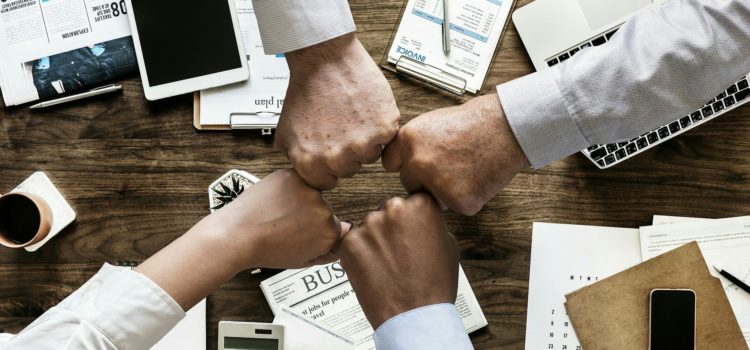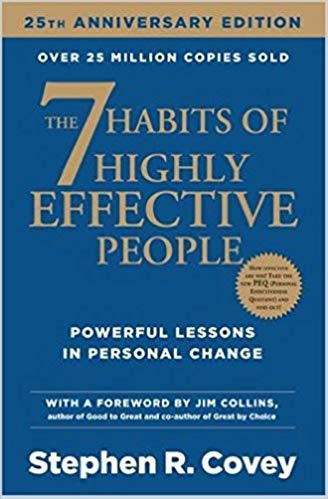

This article is an excerpt from the Shortform summary of "The 7 Habits of Highly Effective People" by Stephen Covey. Shortform has the world's best summaries of books you should be reading.
Like this article? Sign up for a free trial here .
Habit 6: Synergize is the major achievement of independent relationships: the ability to create synergy with another person. Synergy creates an outcome that’s greater than the sum of its parts, as in 1+1 = 3 or more.
In other words, two people working together can create greater results than would have been possible separately. Synergize proves the 7 habits work together by furthering communication skills.
What Is Habit 6: Synergize, and What Does it Mean?
In order to achieve habit 6: synergize, you need to understand that synergy is the culmination of all the previous 7 habits — you need a deep conviction of your principles and values, a Win/Win paradigm, and the skills to develop and nurture effective interdependent relationships. Part of the reason that 1 + 1 can equal 3 is that the relationship itself adds value and creates the ability to synergize; the joint between the two pieces of wood adds strength beyond what each piece can carry. Similarly, the teamwork, high Emotional Bank Account, and mutual understanding between two people add to their collaborative creative power.
Communicating synergistically means opening your mind and heart to different realities and possibilities. This requires vulnerability and comfort with (or at least tolerance of) uncertainty and some level of chaos; in its essence, synergy is a creative process. You’re not entering the situation to push your proposition or blindly accept the other person’s, but rather to come up with a third alternative.
Sometimes situations devolve into chaos instead of evolving into synergy, and those negative experiences can make the people involved skittish about opening up in the future to the possibility of synergistic communication.
One habit 6: synergize example is when a company creates policies that give employees the freedom to allocate some of their time to develop new ideas — as long as they still get their work done in a timely manner — but a handful of people abuse it and scare executives into reforming or revoking the policy.
Additionally, many people have paradigms that cause them tdo mistrust other people and interact in protective or defensive ways. Often these people only have brief glimpses of synergy, such as when people come together in an exceptionally cooperative and collaborative way in response to an emergency. These events can seem like rare, extraordinary occurrences, but with the right approach you can experience synergy regularly.
How to Create Synergy with the 7 Habits
Because synergy requires vulnerability and openness, it’s critical that the people involved trust each other. There’s a positive correlation between trust and communication; higher trust allows for higher levels of communication that improve interdependent relationships and make synergy possible.
Habit 6: synergize is one of the 7 habits and can build upon momentum in a relationship or group dynamic. One person begins by being courageous enough to be authentic and open-minded, which empowers others and makes them feel safe to be open and authentic as well. This can build back and forth as everyone gains new insights, and those insights open new ideas, and the creative energy swells.
For more habit 6 synergize examples, think of brainstorming sessions you’ve been in. The first ideas might’ve been more obvious and conventional, but all it takes is one out-of-the-box suggestion to lead to more innovative and unexpected ideas, and that winding road can take you to places you never expected. Plus, the people involved in that process tend to come out of it more excited about and committed to the plan than if it had been a run-of-the-mill idea produced from a stale collaborative session.
Synergy and Trust
Low-trust situations foster the lowest levels of communication, in which people are protective and defensive. You see this in situations like divorce settlements, where people feel the need to close all loopholes and cover all their bases for lack of trust and fear of being taken advantage of. Ironically, this kind of communication further erodes trust and spooks people into being even more protective and defensive. This form of communication leads to Win/Lose or Lose/Win frameworks.
A moderate level of trust creates respectful communication, when people are polite, honest, and genuine, but avoid opening up enough to risk confrontations. People who communicate at this level understand each other’s positions intellectually, but don’t assess their own paradigms or open their minds to new possibilities. Without the necessary components to come up with creative new ideas, this kind of communication tends to lead to compromise, a low form of Win/Win.
High trust leads to high levels of synergistic communication that produce creative, synergistic results. The trust allows everyone involved to feel safe and comfortable openly sharing their ideas and paradigms, with the knowledge that others will try to understand their perspective and build on it. This level of communication nurtures the P/PC balance that fosters even greater trust and positive results.
A productive relationship with a high Emotional Bank Account lays the groundwork for synergy, and each time the people involved achieve synergy it further builds their relationship.
Opportunities for Growth
To fulfill habit 6: synergize you must view a person’s differences as assets — rather than roadblocks — to creating something new and innovative; someone who has the same view and opinion as you adds nothing to your knowledge and perspective, but someone with a different view gives you the opportunity to expand your perspective and come up with solutions that would never have occurred to your otherwise.
As we discussed earlier, everyone sees the world through their own paradigms; that means no one’s view is objective, including yours. If you think you see the world objectively, then you’ll think that anyone who sees things differently is wrong. But if you understand that your — and everyone else’s — lens of the world is determined by individual paradigms, then you can value and appreciate that other people’s views can broaden your (admittedly limited) understanding of the world.
In fact, if you truly understand that your view of the world is limited by your lens, then it’s easy to see why you need to consider and integrate other people’s perspectives so that you can approach life with more complete data. If you were trying to map the stars and were confined to the view from where you live, would you reject images of the night sky that someone sent you from another part of the world because they looked different than the photos you took? Or would you use them to expand your map? Think about other times you achieved habit 6: synergize examples by thinking from other perspectives.
Synergy Eliminates Barriers to Change
In order to make lasting change in your life, you need to make changes that foster that growth while also eliminating the factors that are limiting growth. Synergy is especially effective at minimizing the negative forces that push back against positive growth.
The more change you try to create by focusing solely on driving forces, the harder it will become to make progress — like if you were pushing a metal spring back, and the tension kept building until finally the pent-up force of the coils bounce back against you. When you use synergy to tackle a problem, you see differences and challenges as opportunities to create new insights and possibilities, which actually transforms restraining forces into driving forces.
Independent Synergy Starts with Internal Synergy
Some people let their left brain lead them through life, taking logical approaches to all situations; but sometimes the problems you encounter in life are emotional or creative problems that call for right-brained solutions. Other people lead with their intuitive, creative right brains, but encounter the inverse issue when dealing with analytical and logical problems. Life is a balance of both the logical and the emotional, and habit 6: synergize requires both sides of your brain to effectively adapt.
Have you ever had a relationship in which one person is emotionally driven and the other is intellectually driven? What happens when you have an interpersonal conflict? One person tries to express their concerns in feelings, while the other person is asking for concrete examples and evidence of the problem. If both sides of your brain are engaged, you can better understand and respond to the other person, and integrate both emotional and logical aspects in your solution. In this way, habit 6: synergize helps move the 7 habits because lets you have to most effective form of synergistic communication.
We know the 7 habits all work together, and habit 6: synergize lets us use our communications skills and knowledge as one. It’s crucial to keep all this knowledge in mind as you work through all 7 habits of highly effective people.
———End of Preview———

Like what you just read? Read the rest of the world's best summary of "The 7 Habits of Highly Effective People" at Shortform . Learn the book's critical concepts in 20 minutes or less .
Here's what you'll find in our full The 7 Habits of Highly Effective People summary :
- How to prioritize the hundred tasks you have to focus on the one or two that really matter
- The right way to resolve every disagreement and argument
- How to avoid burning out and succeed over 20+ years






